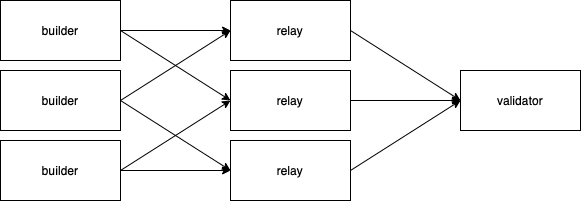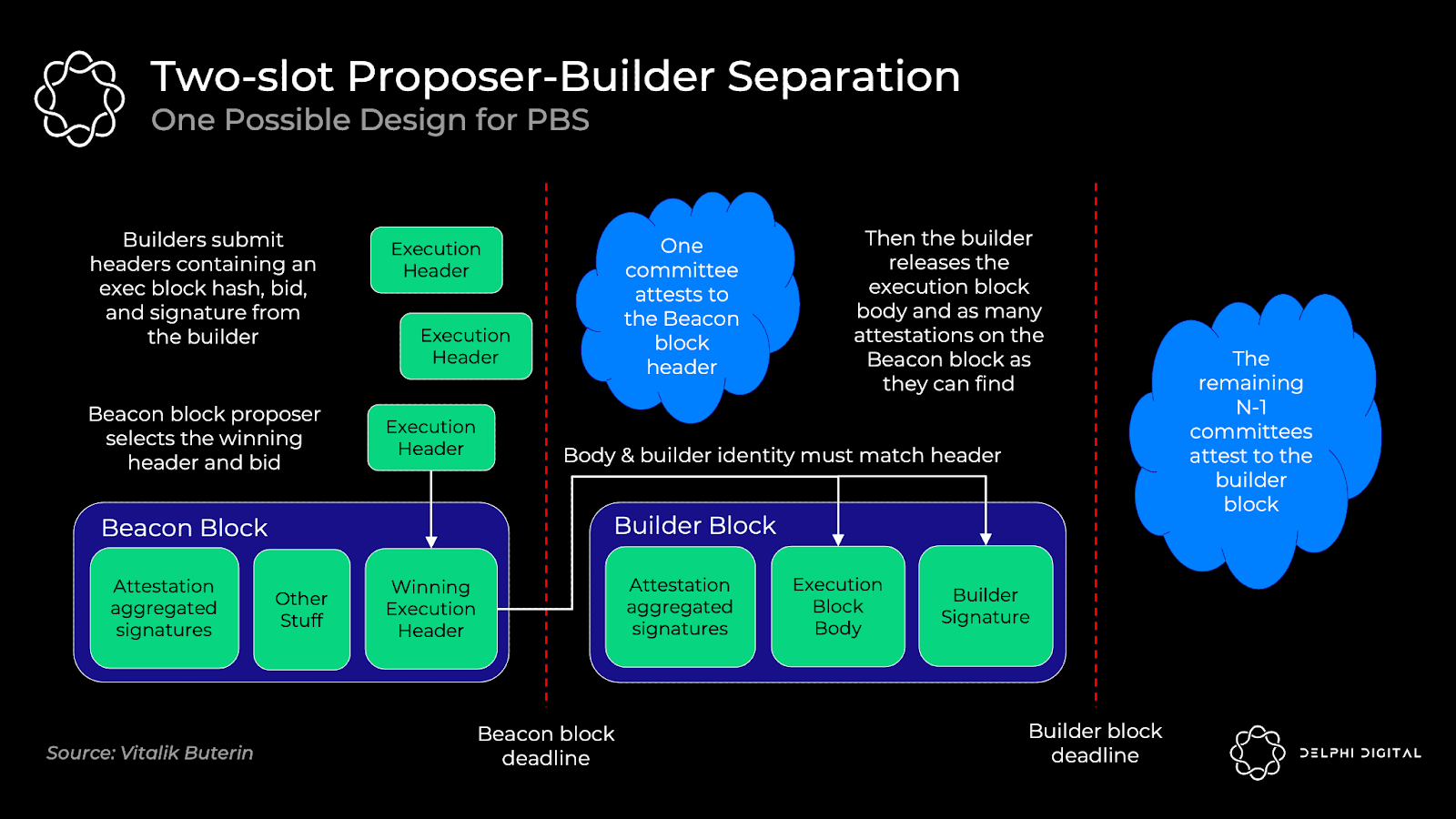
What is MEV Boost?
Written by Alchemy
Maximal Extractable Value (MEV) is the process of extracting value from a blockchain network by adding, removing, or changing the order of transactions included in a block. MEV profits often come at the expense of the ordinary user. Flashbots, an MEV research organization, created MEV-Boost in order to mitigate block producers' ability to harm users.
What is MEV-Boost?
MEV Boost is an iteration of the current Flashbots mechanism designed to counteract the negative effects of Maximal Extractable Value (MEV) on Ethereum. Flashbots arose from the need to solve several problems related to MEV including:
Quantifying the scale and volume of MEV extraction
Democratizing access to MEV profits
Reducing the impact of MEV-related transactions on regular users
The original Flashbots product was mev-geth, a forked version of the go-ethereum (geth) client software used by mining nodes in building blocks. Mev-geth allowed miners to outsource the work of finding MEV opportunities and building the most profitable block to other parties, called searchers and relayers.
What are searchers and relayers?
A searcher is a specialized party, such as a trader, that finds profitable transactions and sends them to a miner for inclusion in a block, and instead of passing through the public mempool, searcher transactions go to a relayer that validates the transaction bundles who then sends them to the miner for inclusion in a block.
This process encourages transaction privacy.
The miner running mev-geth uses software to evaluate all incoming bundles and chooses the bundles with the most profitable transaction ordering. Flashbots also allows searchers to express their inclusion preference (i.e. the position of their transactions in a block) using a sealed-price bid scheme. This means transaction senders don’t have to bid for the top position in a block as was the case with the pre-Flashbots era.
After building a block, mev-geth compares it to a regular Ethereum block to see which has more profits. If the Flashbots block is deemed more profitable, it starts mining on it–otherwise the client mines on the regular Ethereum block.
How does mev-boost work?
Like mev-geth, mev-boost enables block proposers (known as validators in PoS) to outsource block production. However, the current MEV Boost design has certain differences including the Builder API, block builders, escrows, and validators.
What is the Builder API?
The Builder API is a modified version of the Engine API used by Beacon Chain nodes to connect execution clients that are responsible for building blocks and consensus clients that responsible for proposing blocks for addition to the Beacon Chain.
The Builder API is a more neutral name for the mev-boost middleware that facilitates interactions between validators and block builders. The Builder API sits between the validator running a consensus client and a block builder running an execution client.
The Builder API allows block builders to send an ‘execution payload header’–a cryptographic commitment to the block’s contents and total value–to the validator for signing. This prevents validators from stealing the block’s content and locally producing a block to capture the MEV.
Afterward, the validator for the next Beacon Chain block, who must have been selected as a proposer, signs the execution payload header with their public key, and is then transferred to the escrow which passes it to the block builder.
The block builder then is expected to publish the body of the execution payload (i.e. the transaction bundle) to the network along with the validator’s signature attesting to the block’s integrity.

What is a block builder
A block builder is an entity that invests in specialized hardware necessary for resource-intensive block production.
The block builder receives transactions from searchers who, in addition to the gas fee, express their preferred position in the block by making a sealed-price bid. The builder’s job is to build the most profitable block using different strategies.

What is the relayer?
A relayer is an entity responsible for checking blocks before passing them to validators. The relay protects the validators from spam by confirming the builder blocks for validity and estimating the MEV-related value of each block.
What is the an escrow?
An escrow is an entity that receives the contents of a block from the relay. The escrow provides data availability to validators by ensuring that data for every execution payload which the validator signs off on is available. Also, relayers must trust escrows not to reveal the contents of the payload to the validator before the latter signs it.
What is a validator?
A validator in the mev-boost architecture is a staked participant in the Beacon Chain selected to propose a block for a particular slot. The validator communicates with the relay to get the most profitable block header, which it attests to it by signing with its public key.
Once the block is added to the chain, the validator receives transaction fees and MEV tips in the “fee recipient” address specified in the execution payload.

What are the benefits of MEV-Boost?
The benefits of MEV Boost include democratizing MEV opportunities so that solo stakers can participate profitably, lowering gas fees, and increasing privacy for Ethereum users.
1. MEV-Boost Protects Against Centralization
MEV can lead to the creation of permissioned mempools or off-chain deals between traders and block producers. Both could significantly threaten decentralization in Ethereum. MEV-Boost fixes this problem by democratizing access to MEV opportunities which, although counterintuitive, mitigates the risk of centralization.
In a post-Merge Ethereum, large staking pools with lucrative MEV profits can reinvest the money into exploiting even more MEV opportunities. This would likely put pressure on solo stakers to join big staking pools if they want to earn more staking returns.
By running MEV Boost, any validator, including solo stakers, have access to MEV opportunities. The commit-reveal scheme in which validators sign payload headers and block builders release the body afterward means builders don’t need to trust validators. Thus, large staking pools cannot use their reputation as leverage to corner MEV deals.
2. MEV-Boost Helps Lower Gas Fees and Improves Security
MEV impacts gas fees for regular users through priority gas auctions carried out by players in DeFi (particularly trading bots). MEV-Boost’s contribution to solving this problem is moving gas auctions off-chain.
Instead of repeatedly sending transactions to the public mempool, DeFi traders send one-time sealed-price bids to miners.
In a sealed-price bid auction, all bids are revealed at once, with buyers only required to pay what they initially bid.
Sealed-price bid auctions eliminate the PGA-style bidding wars that result in massive stress to the p2p network and higher gas fees for regular transactions.
Ethereum users, especially participants in DeFi, will also benefit from greater transaction privacy. Using MEV Boost is perhaps the safest (and legal) option for escaping Ethereum’s Dark Forest, the colloquial name for the public mempool.
Resorting to access-only mempools or off-chain deals is rarely beneficial since operators are more likely to exploit users when they have no alternatives. Flashbots is an open-source, decentralized alternative to private mempools and offers more options for privacy-focused users.
How does MEV-Boost work with Proposer/Builder Separation?
Proposer-Builder Separation (PBS) is a part of Danksharding and is a planned change to Ethereum’s consensus that will see different entities manage block production and block proposals. Here, validators (proposers) will receive bids from multiple block builders before choosing which block to propose to be added to the chain.
Because MEV gives validators and miners incentives to reorg Ethereum, perform time-bandit attacks, and conduct off-chain deals with traders, PBS is designed to reduce the impact of MEV on consensus-layer security.
In-protocol separation of the block production and proposal would further reduce this risk. PBS could use a version of the commit-reveal scheme used in MEV Boost’s Builder API to prevent proposers from accessing the contents of a block before signing it. This would directly eliminate the incentive for validators to conduct chain reorganizations or collude with traders.

Flashbots MEV-Boost can be seen as a precursor to in-protocol PBS. This is a critical role since in-protocol PBS would require updating the Beacon Chain’s fork choice rule.
In the meantime, MEV-Boost allows researchers and users to see what Proposer-Builder Separation might look like in a post-Merge Ethereum.
MEV Boost will also serve as a prototype to inspire the development of the consensus-layer logic and middleware necessary for implementing external block-building in Ethereum.
Conclusion
Researchers hope that MEV Boost and, in the future, Proposer-Builder Separation via danksharding will help to mitigate MEV’s real threats to a permissionless and decentralized Ethereum and will continue to further help reduce gas fees and network congestion for users.

Related overviews
What is Blockchain Sharding and How Does it Relate to Ethereum?
Learn About Safe (Justified), Finalized, and Latest Commitment Levels
Learn How Ethereum Transactions are Propagated Across the Ethereum Network

Build blockchain magic
Alchemy combines the most powerful web3 developer products and tools with resources, community and legendary support.